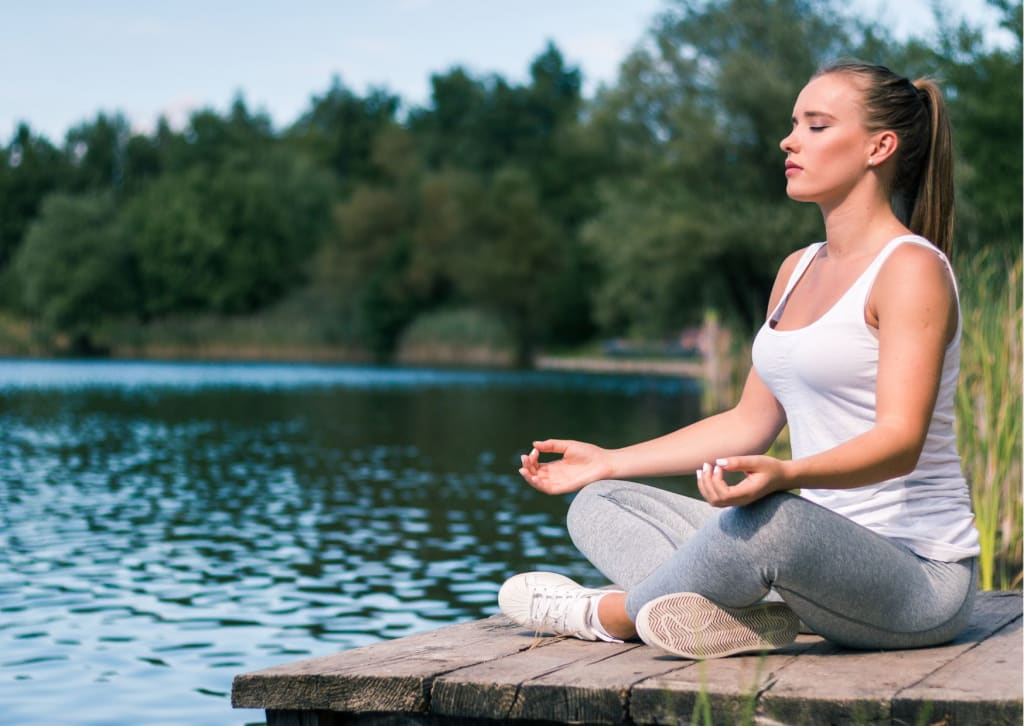
In our fast-paced and often chaotic lives, finding moments of peace and clarity can feel like a luxury. However, mindfulness meditation offers a simple yet powerful practice to cultivate a sense of calm, focus, and presence amidst busyness. Whether you're new to meditation or looking to deepen your practice, this beginner's guide will introduce you to the transformative world of mindfulness meditation. We will explore the benefits of mindfulness, provide step-by-step instructions on getting started, and offer tips to enhance your practice. By embracing mindfulness meditation, you can unlock a deeper connection with yourself, reduce stress, and discover the profound joy of living in the present moment.
1. Understanding Mindfulness and Its Benefits:
Mindfulness is the practice of intentionally focusing our attention on the present moment, with an attitude of non-judgment and acceptance. It allows us to cultivate a heightened awareness of our thoughts, emotions, and physical sensations without getting caught up in them. Research has shown that mindfulness meditation offers numerous benefits, including stress reduction, improved mental clarity, enhanced emotional well-being, increased resilience, and better overall physical health.
2. Creating a Meditation Space:
Designating a specific space for your meditation practice can help set the tone and create a sense of sacredness. Find a quiet and comfortable spot in your home where you can sit undisturbed. Decorate the space with items that inspire tranquility, such as candles, plants, or meaningful objects. Make it a sanctuary that invites you to enter a state of calm and presence.
3. Establishing a Regular Practice:
Consistency is key when it comes to mindfulness meditation. Start with a realistic goal of dedicating a few minutes each day to your practice. As you build momentum, gradually increase the duration of your sessions. Establish a routine by choosing a specific time each day that works best for you. Whether it's early morning, during lunch breaks, or before bedtime, find a time when you can commit to your practice without distractions.
4. Mindful Posture and Breath:
Sit comfortably with your back straight, shoulders relaxed, and hands resting on your lap or knees. Close your eyes or soften your gaze. Begin by bringing your attention to your breath, noticing the sensation of each inhale and exhale. Allow your breath to be natural and unhurried, using it as an anchor to keep you present throughout the practice.
5. Cultivating Mindful Awareness:
Once you have established a steady breath, gently shift your focus to your body sensations, thoughts, and emotions. Notice any physical sensations without judgment, observing them as they arise and pass away. Acknowledge your thoughts without getting carried away by them, allowing them to come and go without attachment. Be aware of any emotions that arise, accepting them with kindness and curiosity. The key is to cultivate an attitude of non-judgmental awareness, observing your inner experiences without trying to change or control them.
6. Dealing with Distractions:
It's natural for the mind to wander during meditation. When you notice your attention drifting, gently and non-judgmentally guide it back to your breath or the present moment. Treat distractions as opportunities to practice letting go and returning to the present. With time and practice, you will develop greater focus and concentration.
7. Mindfulness in Daily Life:
Mindfulness is not limited to your formal meditation practice; it can be integrated into your daily life. Take moments throughout the day to pause, breathe, and bring your attention to the present moment. Engage in activities with full awareness, whether it's savoring a meal, walking in nature, or having a conversation. By cultivating mindfulness in everyday experiences, you can infuse your life with greater presence and appreciation.
8. Deepening Your Practice:
As you progress in your mindfulness meditation journey, consider exploring guided meditation apps, attending meditation retreats, or seeking guidance from experienced teachers. Engaging with a supportive community can provide inspiration, guidance, and accountability.
9. Embracing Self-Compassion:
Be gentle and kind with yourself throughout your meditation practice. Approach yourself with a sense of self-compassion, understanding that meditation is a lifelong journey and that it's natural to have ups and downs. Treat yourself with patience, acceptance, and love, embracing the practice as an opportunity for self-care and personal growth.
Mindfulness meditation offers a pathway to greater peace, clarity, and presence in our daily lives. By understanding the principles of mindfulness, establishing a regular practice, and cultivating an attitude of non-judgmental awareness, you can tap into the transformative power of the present moment. As you embark on this journey, be patient, embrace self-compassion, and allow mindfulness to infuse every aspect of your being. With practice and dedication, you'll discover the profound joy of living fully in the here and now.
That's all from me. I wish you a productive day and see you later :)
About the Creator
Waclaw Z
Passionate author empowering personal growth. Inspiring readers to unlock potential, cultivate positive habits, and embrace a purpose-driven life. Join me on a transformative journey. #motivation #selfhelp #author






Comments
There are no comments for this story
Be the first to respond and start the conversation.